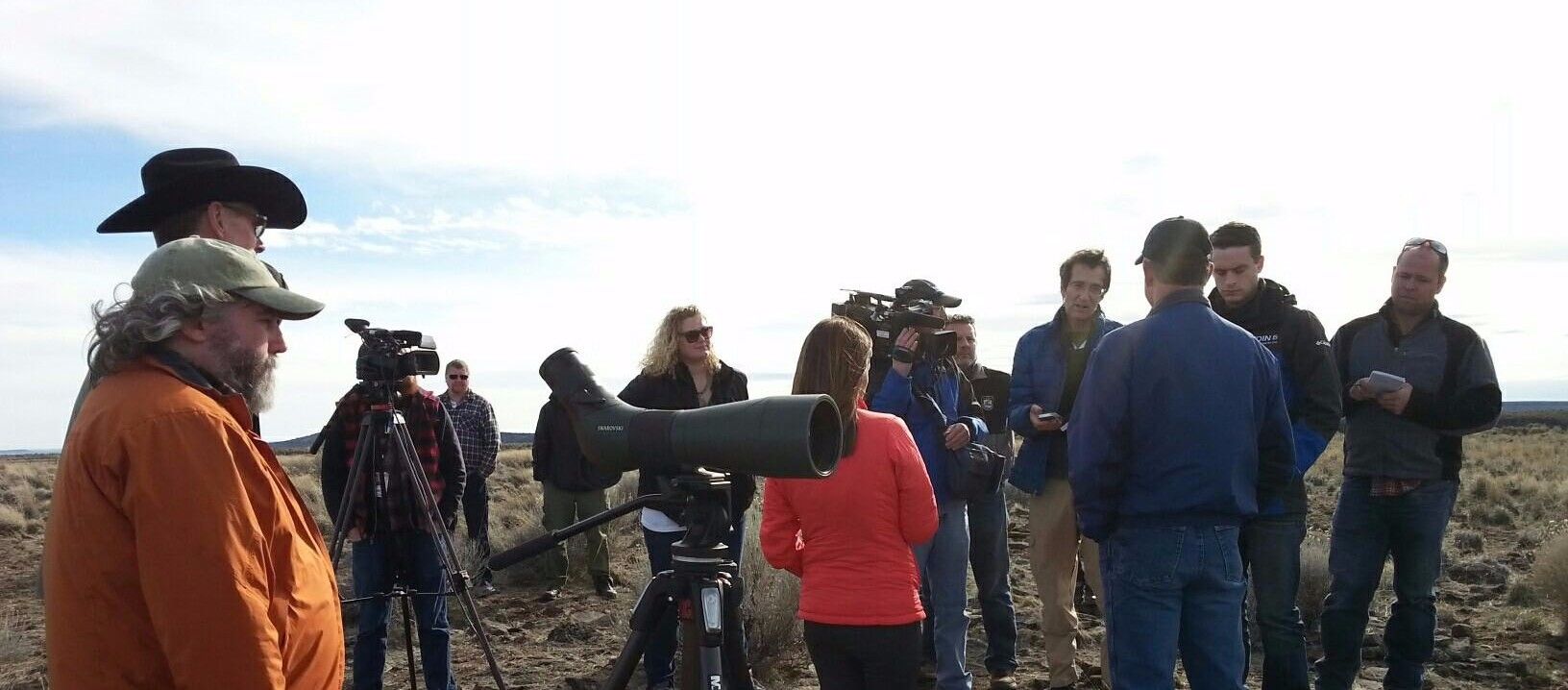In a corner acre of Mark Owens' hayfield near Crane, a simple experiment is taking root. What appears to be a modest plot of corn, winter squash, and watermelon may very well be the largest drip-irrigated field planting in Harney County's history—and potentially a glimpse into the region's agricultural future.
The experimental acre-plus field emerged from a collaboration between the Biz Harney Opportunity Collaborative's Harney County Food Systems initiative and Owens Hay, driven by a simple but crucial question: How can Harney County grow more food locally while using less water?
"Mark Owens offered the property up for an 'experiment' more or less," explained Kellie Frank, who is coordinating the project. "Brenda [Smith] and I have been thinking for a while that Harney County Could start looking at different crops that can be grown successfully here with less water. Drip irrigation can grow crops with significantly less water than a pivot, for example."
From Concept to Field
The project represents a practical extension of the Harney County Food Systems initiative, which formed out of the Biz Harney Opportunity Collaborative to build a more secure local food system in Harney County. While the region has entrepreneurs ready to expand their gardens and a farmers market to support marketing efforts, the community recognized a need to test larger-scale food crop production.
"We knew we needed to pilot a larger scale field for this growing," Brenda noted. The timing aligned perfectly when Owens offered access to a scalable field suitable for drip irrigation trials.
To prepare for the undertaking, the team invested in education, spending a full day at Oregon State University's Malheur Experiment Station in Ontario. Faculty Research Assistant Bill Buhrig provided comprehensive training on large field plantings under drip irrigation, including a visit to local drip irrigation suppliers. The team returned with both supplies and tractor-mounted equipment for laying drip tape.
Strategic Crop Selection
The choice of corn, winter squash, and watermelon wasn't arbitrary. Each crop was selected to address specific challenges the team anticipated in this first-year trial.
"The field was described as having heavy weed pressure and we wouldn't be able to attend to it on a daily basis for weeding," Brenda explained. "Sweet corn and winter squash grow pretty fast and often shade out weeds, so that was the most important" consideration.
Storage and harvest considerations also influenced crop selection. "We wanted something that had some holding capacity in the field—in other words if we missed the exact day to harvest it would be OK," Brenda said. Winter squash can store for months and be processed into various products, while sweet corn can be easily frozen for year-round school use. Both require minimal harvest events rather than weekly picking.
The watermelon addition came at Mark Owens' request, creating what the team playfully calls a "variety trial."
Farm to School Connections
The ultimate goal extends beyond successful crop production to strengthening local food systems, particularly connecting local production with area schools. The harvest is intended for sale to local schools through Farm to School programs, with Crane School already expressing interest.
"There are programs to promote local foods into our schools and our schools do not know how to access the food or the program," Kellie observed. While she is receiving training in Farm to School programming, the pilot field provides a concrete opportunity to test these supply chain connections.
The project also plans to host a "lessons learned field day" at season's end to demonstrate the irrigation and planting techniques to other potential growers.
Community Collaboration in Action
The project exemplifies the collaborative approach that characterizes much of Harney County. The core team includes Harney County Food Systems Intern Taylor Trent, Harney County Food Systems Coordinator Kellie Frank, High Desert Partnership Executive Director Brenda Smith, and Burns High School science teacher Roxane Bailey, working in partnership with Owens Hay employees.
Some funding comes through a specialty crop grant, while Owens provides the land, water, tractor access, and local expertise. "I would consider Mark Owens and Owens Hay a valuable partner in the Harney County Food Systems initiative—a great example of a partner," Brenda noted.
Looking Forward
While still early in the growing season—with hopes to expand planting further—the project represents more than agricultural experimentation. It demonstrates how community partnerships can address pressing regional challenges, from water conservation to food security.
"We view this as a pilot project for the Harney County Food Systems initiative to see if we can encourage more local food being grown in Harney County and potentially starting new businesses as well," Kellie explained.
As climate concerns and water availability continue to challenge traditional agricultural approaches throughout the West, Harney County's drip irrigation experiment may offer insights that extend far beyond its county boundaries. For now, though, the focus remains on proving that innovation, collaboration, and careful planning can help a rural community grow its way toward greater food security—one precisely irrigated row at a time.

